Gross domestic product — Growth weakened as the sovereign debt crisis took its toll on growth. Fourth quarter eurozone GDP slid 0.3 percent. On the year, GDP was up 0.7 percent. But the eurozone avoided a technical recession — first quarter GDP was unchanged both on the quarter and on the year indicating the economy is stagnant. GDP resumed its slide in the second quarter, dropping 0.2 percent on the quarter and sliding 0.5 percent from a year ago.
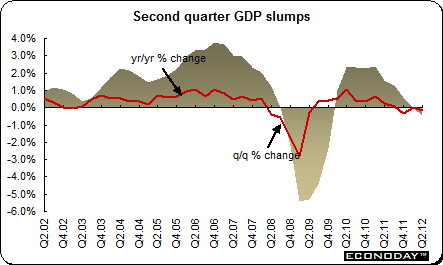
Germany provided a modest lift to overall GDP according to second quarter GDP. France was unchanged for the second quarter while both Italy and Spain declined. It was the fourth consecutive quarter of contraction for Italy but the third for Spain.
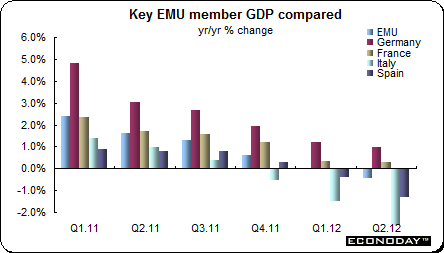
Industrial production — Most analysts readily acknowledge that the economy will not function to its fullest potential unless serious structural reforms are undertaken in the labor markets and the financial markets. For example, the industrial sector is the most dominant for the larger countries and the sector is embedded with labor rigidities that present a formidable challenge. Benefit cut backs are not politically expedient. For example, it is difficult to fire employees or to cut back in times of weak growth without paying exorbitant severance and ongoing jobless benefits. These can be so lucrative that the incentive to find another job is non-existent. The graph below vividly portrays the havoc wrought on production by the financial crisis and now the sovereign debt crisis. Industrial production continues to be weak or contracting in almost every member state.
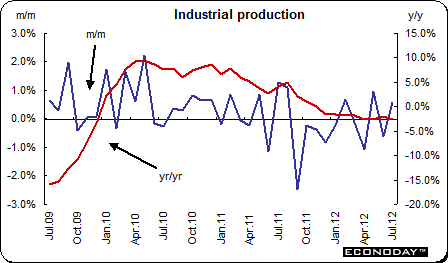
Inflation — As measured by the harmonized index of consumer prices, inflation soared above the ECB’s two percent inflation target. However, prices declined as commodity prices weakened. The ECB’s mandate as stated in the Maastricht Treaty that established the Bank is inflation control. This has been interpreted to mean that inflation control has a priority over encouraging growth. However, when the economy contracted, the ECB eased interest rates in conjunction with other central banks worldwide — but lagged both on the size and speed of the cuts. The HICP has been above the ECB’s 2 percent target since December 2010. However, the index has been steadily declining in the last few months because of weak growth and easing energy prices. It unexpectedly picked up according to the flash estimate for August.
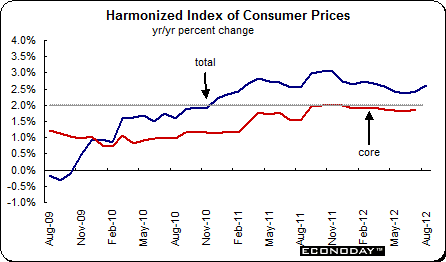
Unemployment — Unemployment fluctuated between 8.7 percent and 9 percent during 2004 and in 2005. However, it declined steadily from the summer of 2005 to spring of 2008. Unemployment reached a low of 7.2 percent in February and March of 2008. The unemployment rate now has increased to a record high of 11.3 percent as growth stagnates under the pressures from the sovereign debt crisis.
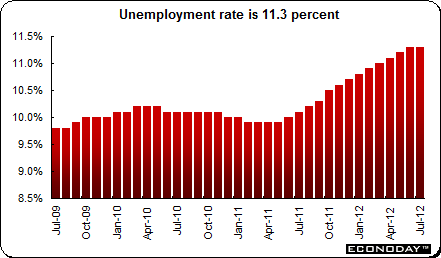
Merchandise trade — Trade plays an important role in European growth. German and Italian manufacturing sectors especially benefited from the weaker euro and it allowed them to sell their products overseas at reduced prices. Foreign trade had been a major contributor to revived economic growth, especially in Germany where consumer spending tends to lag. Despite the high value of the euro, trade continued to perform well for the most part until August 2008, when the financial crisis along with other effects on the real economy, virtually obliterated world trade. The trade balance was negative from November 2010 until September 2011 when it once again was positive. The balance has been in surplus since September but mostly on weak imports rather than export growth.
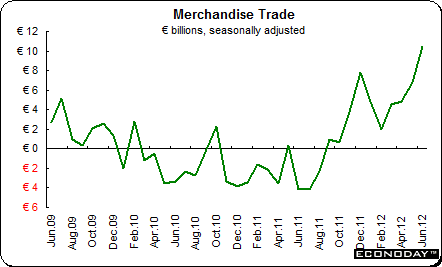
|